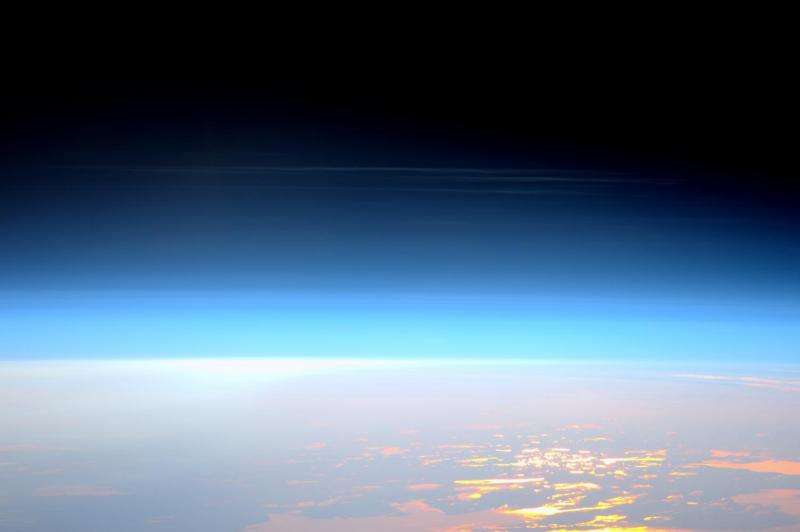Image: Space station view of rare noctilucent clouds

Expedition 47 Flight Engineer Tim Peake of the European Space Agency photographed rare, high-altitude noctilucent or "night shining" clouds from the International Space Station on May 29, 2016.
Polar mesospheric clouds—also known as noctilucent clouds - form between 76 to 85 kilometers (47 to 53 miles) above the Earth's surface, near the boundary of the mesosphere and thermosphere, a region known as the mesopause. At these altitudes, water vapor can freeze into clouds of ice crystals. When the sun is below the horizon and the ground is in darkness, these high clouds may still be illuminated, lending them their ethereal, "night shining" qualities.
In the late spring and summer, unusual clouds form high in the atmosphere above the polar regions of the world. As the lower atmosphere warms, the upper atmosphere gets cooler, and ice crystals form on meteor dust and other particles high in the sky. The result is noctilucent or "night-shining" clouds—electric blue wisps that grow on the edge of space. Polar mesospheric clouds can be observed from both the Earth's surface and in orbit by astronauts aboard the International Space Station.
Provided by NASA





















